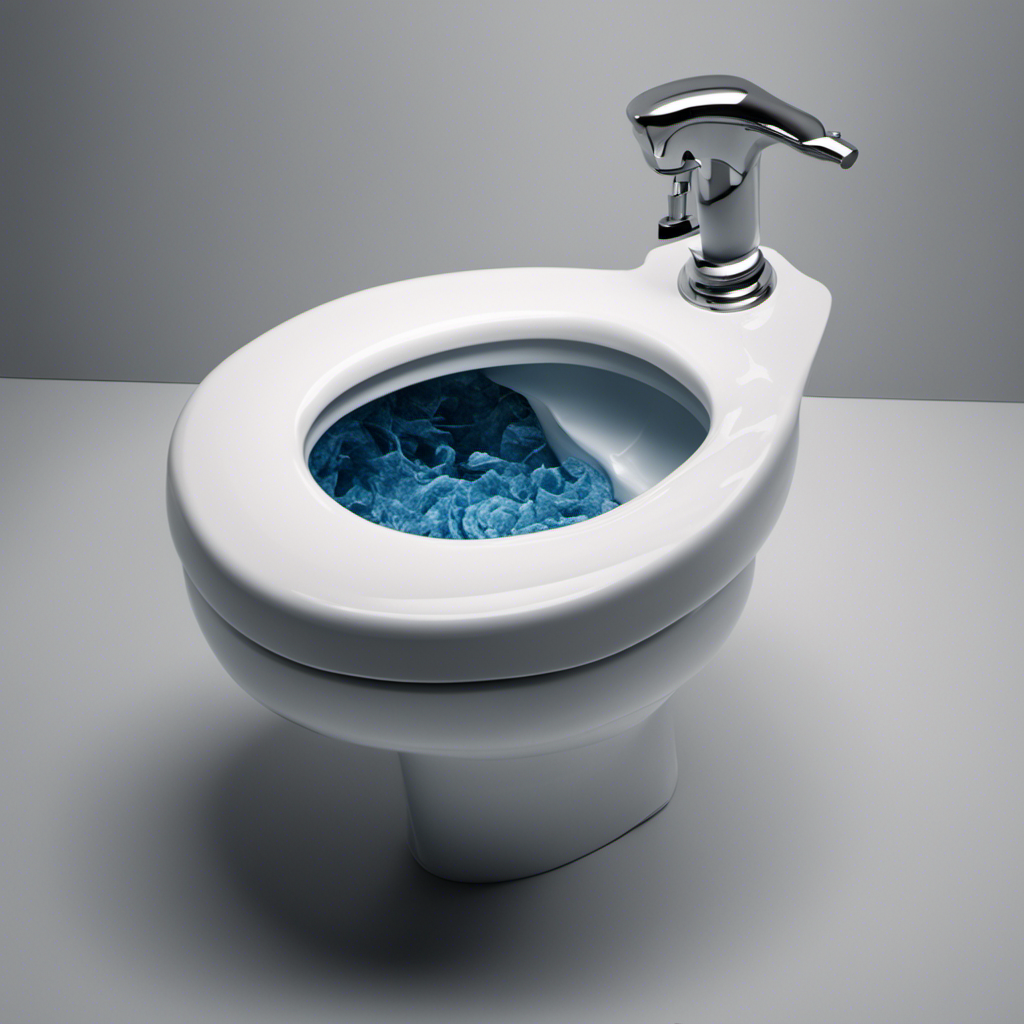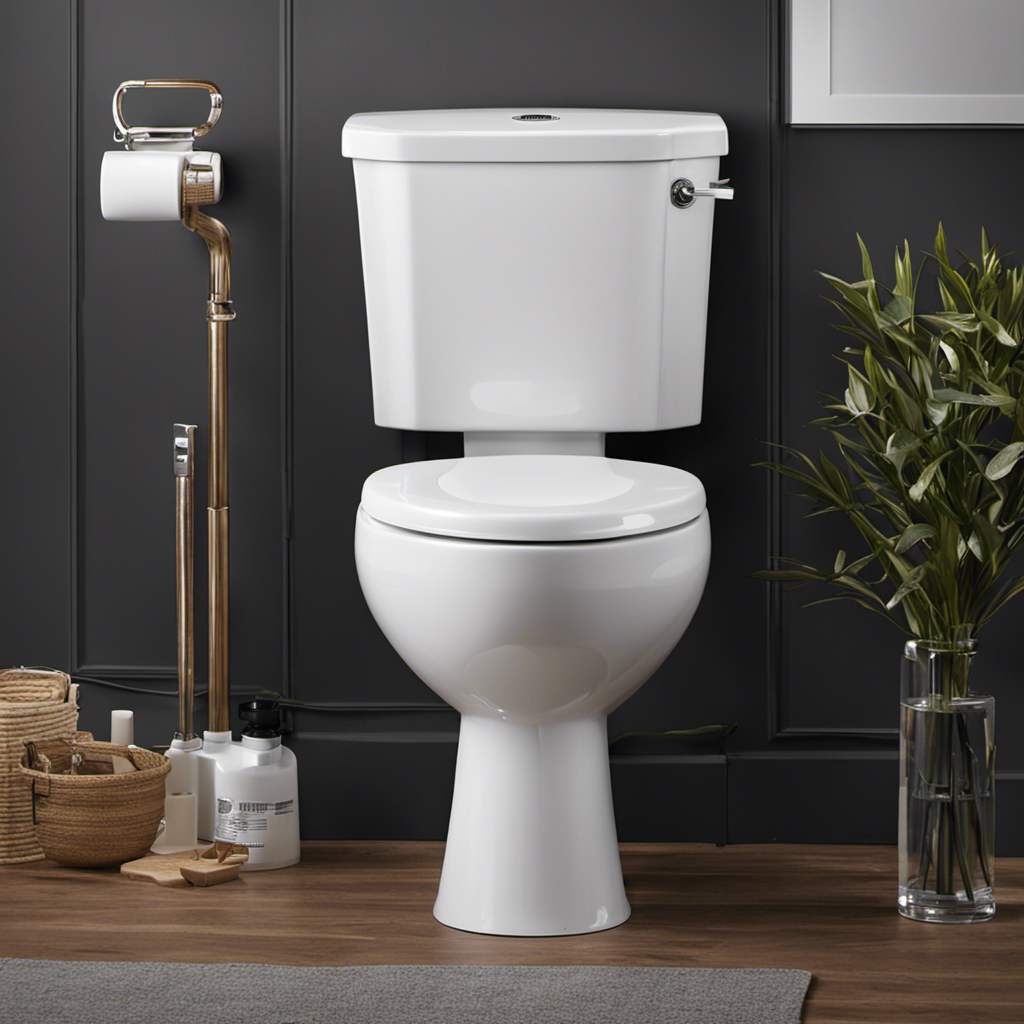I’ve been there – you’re standing in your bathroom, staring at a leaky toilet flange and wondering how on earth to fix it. Well, fear not!
In this article, I’m going to walk you through the step-by-step process of changing a toilet flange. With just a few tools and some basic know-how, you’ll be able to tackle this DIY project like a pro.
So let’s dive in and get your bathroom back in tip-top shape!
Key Takeaways
- Assess the condition of the toilet flange for cracks, breaks, and signs of leaking or water damage.
- Gather the necessary tools and materials including an adjustable wrench, screwdriver, putty knife, hacksaw (if necessary), new toilet flange, wax ring, closet bolts, and plumber’s putty.
- Remove the old toilet flange by shutting off the water supply, loosening the bolts securing the toilet to the floor, lifting the toilet off carefully, and inspecting the old flange for damage.
- Install the new toilet flange by aligning it properly with the drainpipe, cleaning the area around the drainpipe, applying PVC primer and cement, and inserting the flange into the drainpipe.
Assessing the Condition of the Toilet Flange
Before you start the process, it’s important to assess the condition of the toilet flange. Evaluating the damage and troubleshooting any issues will help determine the necessary steps for replacement.
Begin by checking for any cracks or breaks in the flange itself. Look for signs of leaking or water damage around the base of the toilet. Inspect the bolts that secure the toilet to the flange and ensure they are tight and in good condition. If you notice any problems, such as a loose or damaged flange, it’s crucial to address them before proceeding with the replacement.
Taking the time to evaluate the condition of the toilet flange will ensure a successful and durable installation.
Now that we have assessed the flange, let’s move on to gathering the necessary tools and materials.
Gathering the Necessary Tools and Materials
To get started, you’ll need a few tools and materials for this task. Changing a toilet flange requires careful preparation to ensure a successful replacement. Here are some common mistakes to avoid and tips for a smooth process.
First, let’s gather the necessary tools and materials. Here’s a handy table to help you:
| Tools | Materials |
|---|---|
| Adjustable wrench | New toilet flange |
| Screwdriver | Wax ring |
| Putty knife | Closet bolts |
| Hacksaw | Plumber’s putty |
Now, let’s discuss some important tips. One common mistake is forgetting to turn off the water supply before starting the replacement. Always shut off the water and drain the toilet tank before proceeding. Additionally, ensure that the new flange matches the specifications of your old one to avoid any fitting issues. Lastly, make sure to use plumber’s putty or silicone caulk to create a watertight seal between the flange and the toilet base.
With the tools and knowledge in hand, we’re ready to move on to the next step: removing the old toilet flange.
Removing the Old Toilet Flange
Once you’ve gathered the necessary tools and materials, it’s time to start removing the old toilet flange. Evaluating the damage is crucial at this stage to determine the best course of action. Here’s how to proceed:
- Begin by shutting off the water supply and draining the toilet tank.
- Loosen the bolts securing the toilet to the floor and carefully lift it off, setting it aside.
- Inspect the old flange for any signs of damage, such as cracks or corrosion.
- If the flange is in good condition, removing it can be straightforward with a flange removal tool.
- However, if the flange is damaged beyond repair, alternative repair methods like using a repair plate or a repair ring may be necessary.
Installing the New Toilet Flange
When installing the new flange, make sure you align it properly with the existing drainpipe. Proper alignment is crucial to ensure a watertight seal and prevent any leaks.
Begin by cleaning the area around the drainpipe and removing any debris. Apply a generous amount of PVC primer to both the inside of the flange and the outside of the drainpipe.
Next, apply PVC cement to both surfaces. Insert the flange into the drainpipe, making sure it sits flush and level. Rotate the flange slightly to spread the cement evenly. Hold the flange in place for a few seconds to allow the cement to bond.
Testing and Securing the Toilet Flange
Make sure you check the tightness of the bolts securing the flange to the floor to ensure a stable and secure fit. When testing the toilet flange, there are a few techniques and troubleshooting tips that can help ensure its functionality.
Start by visually inspecting the flange for any signs of damage or wear, such as cracks or corrosion. If any damage is found, it’s essential to replace the flange to prevent leaks or other issues.
Next, perform a water test by pouring a small amount of water into the toilet bowl and flushing it. Observe if there are any leaks around the flange or if the water level drops significantly.
Additionally, you can apply pressure to the flange by gently rocking the toilet bowl back and forth. If the flange is properly secured, there should be no movement or wobbling.
Frequently Asked Questions
How Much Does It Cost to Change a Toilet Flange?
Changing a toilet flange can vary in cost depending on factors such as location and materials used. The installation process involves removing the old flange, preparing the area, and installing the new one securely.
Can I Use a Wax Ring Instead of a Rubber Gasket When Installing a New Toilet Flange?
Using a wax ring instead of a rubber gasket for toilet flange installation has pros and cons. It provides a better seal, but can be messier to work with. Here’s a step-by-step guide for installing a new toilet flange with either option.
What Are the Signs That Indicate a Damaged Toilet Flange?
As an expert in repairing toilet flanges, I can tell you that signs of a damaged flange include wobbling toilets, water leaks, and difficulty in securing the bolts. DIY flange replacement can solve these issues efficiently.
Is It Necessary to Hire a Professional Plumber to Change a Toilet Flange?
It’s not always necessary to hire a professional plumber for DIY toilet flange replacement. However, there are pros and cons to consider. It depends on your level of expertise, the complexity of the job, and your comfort with tackling plumbing projects.
Can I Reuse the Bolts and Nuts From the Old Toilet Flange When Installing a New One?
Yes, you can reuse the bolts and nuts from the old toilet flange when installing a new one. However, it is important to inspect them for any damage or wear. Alternatively, you can consider using alternative options to the rubber gasket.
Conclusion
In conclusion, changing a toilet flange is a necessary task that can be easily accomplished with the right tools and materials. By assessing the condition of the flange and following the proper steps to remove and install a new one, you can ensure a secure and leak-free toilet connection.
Did you know that according to a study conducted by plumbing experts, a faulty toilet flange is one of the leading causes of bathroom leaks? Taking the time to properly maintain and replace your flange can save you from potential water damage and costly repairs.










